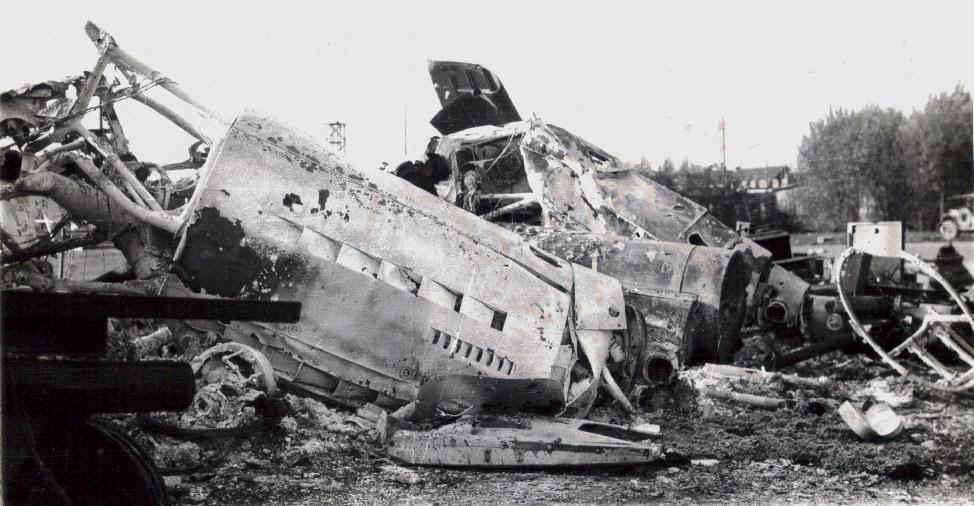
Image du Jours -- World War II
About this Aircraft Debris -- WWII #17 of 23.

(Image from Stockum-Cashion Collection)
Up to this point, I had only a minor idea of the sequence in which these images would be seen; however, for the last six, there is a purpose for the order and the way they conclude.
I continue to learn from these photos, consequently, when I finish a review, I draw new Mylar overlays for all the photos and incorporate all information learned to-date.
This image today is the least interesting photo of the set and it shows little detail and offers only a few questions with any hope of answers.
It is the Si204D, executive transport seen just before this Image du Jour, and we can see that it had twin-engines and had two bladed, wooden props -- the empty prop hubs are obvious.
I believe that the view is nearly the bottom of the starboard engine nacelle because with the right wing supported by the service trailer, that engine would have had a tendency to roll farther toward the fuselage rather than just go straight down to the ground.
The long rows of air-exit vents correspond to the two heads of the inverted (air-cooled) V-12 engine. I do not believe they are engine exhaust ports though there are six exits per row. I think I can make out a common exhaust pipe for each engine bank in the other photos I have.
The wheel-like object on the ground beside the starboard engine is attached to a landing gear strut going behind the engine fire wall and up to the "T" section, on which the landing gear strut pivots back when the landing gear is in the "up" position.
Half-way between wheel and "T" section is a strong arm going aft to more, heavily-built horns, bell cranks, and the like -- this was most likely what raised and lowered the principal gear strut.
Also, on the circular piece at the strut is a bell crank mechanism which no doubt was brake-related. The tire would have burned long and the wheel and hub would have been consumed right along with it. I won't speculate on some of the pieces though I think I recognize them.
In the far left is the corner of the service trailer mentioned yesterday.
I am intrigued by the barrel in the center of the photo between the two engines. If could have been a fuel tank but I don't think so -- it could have been cargo in the aircraft -- auxiliary fuselage fuel tank? I do not think it was ground-service-related because I don't think it could have been under the aircraft where it rests now. There wouldn't have been enough room.
The ring at far right was part of the fully-glazed nose. The heated Plexiglas would have sagged and then gone to the ground. It would not have conducted enough heat to set that piece alight.
In the top center of the photo, on the other side of the aircraft, is some strange something sticking up and it is seen in both images of this aircraft. This looks like the leading edge of the port wing but it could be part of something that was beside the aircraft. The other side of the aircraft cannot be seen, but there is all kinds of burned service equipment just beyond the port engine.
Ken Cashion